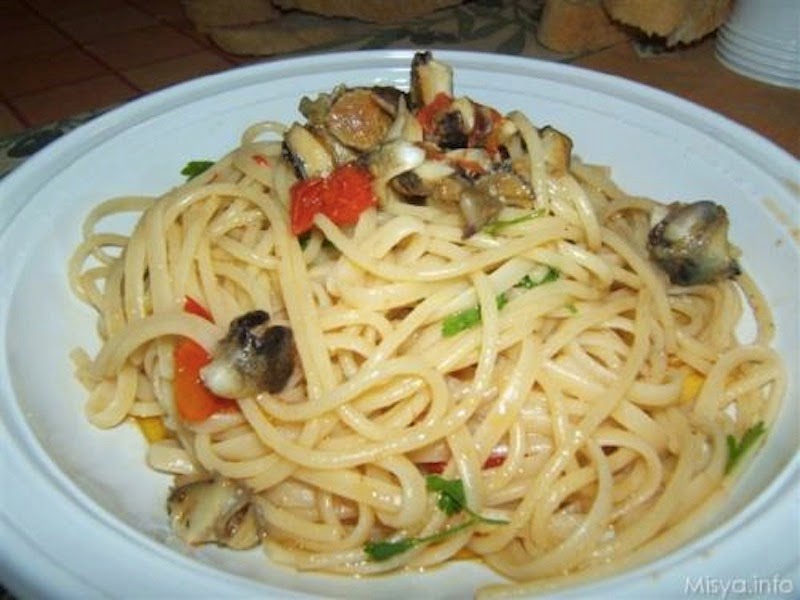In my last blog post, I wrote an appreciation of limpets and
the extraordinary adaptations that they show for life on rocky marine shores
[1]. As I pointed out, that should not prevent us from using these molluscs as
a source of food and that is something that fits with contemporary debates
about sustainability and the need for animal protein. We are now
much less resourceful than our ancestors, and are dependent on what is available
in stores or on market stalls, with the latter often showing a more local
approach than the former.
To gain an historical perspective on eating limpets, I read
Lovell's The Edible Molluscs of Great
Britain and Ireland with Recipes for cooking them [2] and he describes
their consumption by some communities:
"In many places limpets are used for food, especially
on the Continent, where they are oftener eaten than the periwinkle. At Naples
they make them into soup, and I am told it is an excellent dish.. ..The poorer
classes at Eastbourne eat them constantly.. ..At Plymouth they gather great
numbers of them, especially from the breakwater, as well as in the Isle of Man,
where they are known by the name of "flitters"; and in Scotland the
juice of these shellfishes is mixed with oatmeal.."
In addition to this background information, Lovell also
gives recipes [2]:
"Limpet Soup
– Wash them, and free the shells from seaweeds etc.; put them into a saucepan
and parboil them. Take them out of the shells; chop up some parsley, and put
it, with a tablespoonful of oil, or an ounce of lard or butter, into a
saucepan, and fry until it becomes brown. Add a pint of water, and, when
boiling, throw in the limpets, with a teaspoonful of anchovy sauce, some pepper,
and boil again for half an hour; or, if preferred, stew them before putting
them into the soup.
Limpet sauce –
Choose clean-shelled limpets, not covered with barnacles, steep them in fresh
water, and then heat them in a close covered saucepan until they part easily
from the shells. They yield a rich brown liquor, in which, after being shelled,
they may be stewed for half an hour. Thicken the liquor with butter and flour;
strain and season with pepper, cayenne, and salt, and a slight flavouring of
lemon-juice or vinegar. The limpets, being tough and indigestible, are not
returned into the sauce."
The latter comment reminds us of the common failing of
over-cooking seafood of all kinds, something that one learns by trial and
error.
Lovell [2] also gives a more rustic approach to cooking
limpets, originating from the island of Herm in the Channel Islands, and
reported by Jeffreys in Volume 3 of his British
Conchology:
"Roasted limpets
- The limpets were placed on the ground, and laid in their usual position, and
cooked by being covered with a heap of straw, which had been set on fire, about
twenty minutes before dinner."
To these recipes can be added others from different parts of
the World (illustrations of each dish are given, with the URL to the web page
for each recipe):
Hawaiian grilled
limpet: http://www.cookingchanneltv.com/recipes/grilled-fresh-opihi-limpet.html
Limpets with spaghetti:
http://www.ideapesce.it/ricetta/spaghetti-con-patelle
Limpets with rice:
http://www.easyportugueserecipes.com/wordpress/azorean-clams-and-rice-lapas-com-arroz/
Grilled Limpets in the
Azores style: http://myrestaurant.pt/en/recipes/grilled-limpets-azores-style
It is only possible to eat limpets as a regular
part of the diet if one lives at, or near, the coast. For those who are
landlocked, Lovell guides us to Garden Snails, together with their close relatives,
including the Roman, or Vine, Snail (and who doesn't like Escargots à la Bourguinonne?). Limpets and land
snails are both sustainable foods and provide good sources of animal protein.
Although I don't feel comfortable about roasting them alive, placing the
molluscs in boiling water kills them rapidly and they can also be kept in a
deep freeze for a short time to reduce their metabolism severely before they
are cooked.
Mark Zuckerberg became famous not only for Facebook, but
also for his statement that killing animals oneself is better than willingly
being ignorant of how we obtain the meat we buy from butchers or supermarkets
[3]. For those that would like to follow Mr Zuckerberg's example, but cannot
face the prospect of cutting the throat of a pig or a goat, killing snails of
various kinds provides rather less of a challenge.
[2] M. S. Lovell (1867) The
Edible Molluscs of Great Britain and Ireland with Recipes for cooking them.
London, Reeve & Co.




No comments:
Post a Comment